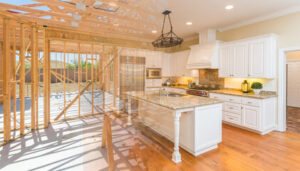Costs of Window Replacement
Window Replacement Rockville MD is one of the most intelligent investments you can make in your home. Poorly installed windows let cold air into your home and warm air escape, leading to higher energy bills.

The type of window you choose will affect your home’s appearance, operating style and functionality. Choosing the right window will also ensure that your project is completed efficiently and within budget.
The costs of window replacement depend on the type, size, and location of the windows. Costs also include labor and material costs. Window replacement costs can range from $200 for DIY projects to $4,000+ for professionally-installed windows. The exact cost will depend on several factors, such as the style and size of your new windows, frame material, energy efficiency features, and installation complexity. The more complex the project, the higher the price.
Window replacement projects often require careful planning to avoid unforeseen expenses. A skilled professional will ensure the job is done properly and efficiently, ensuring that you’re getting the best value for your investment. This will help you to make informed decisions about the best windows for your home and budget.
When choosing a replacement window, it’s important to keep in mind that the quality of the window will determine how much your home will appreciate in terms of resale value. For example, energy-efficient upgrades like Low E glass and argon gas fills can increase your upfront costs but will save you money in the long run by reducing your utility bills.
During the installation process, a skilled contractor will carefully remove the existing windows. This will include scoring the perimeter of the casing on the interior and removing the exterior trim and siding without damaging adjacent surfaces. Then they will carefully install the new window in the opening. They will make sure that the new window is level and square, and that the sealant is secure.
The cost of window replacement can vary depending on the size, type, and location of your windows. The more windows you have in your home, the more time and manpower it will take to replace them all at once. Also, if you’re choosing specialty windows such as bay or double-hung windows, they will be more expensive than standard, single-pane windows. Similarly, windows located on the higher floors of your home will be more expensive than those on the ground floor. This is because the workers will have to carry them up and down stairs.
Energy Efficiency
The replacement windows you choose will play a pivotal role in minimizing energy costs, keeping your home at a comfortable temperature and protecting your interior finishes. Energy efficient window options are a smart investment that will continue to pay dividends over time, helping you keep your energy bills low and the environment protected.
Buildings are responsible for nearly 40% of primary energy use, 75% of electricity consumption and about a third of greenhouse gas emissions in the United States. Old and inefficient windows contribute to these figures by allowing heat to escape during winter and allow warm air to leak into the house during summer, driving up heating and cooling costs.
In addition, older windows do not seal tightly against the elements, which can cause drafts and other problems. This is why many homeowners are looking for ways to make their homes more energy efficient, and one of the most popular solutions is installing new energy-efficient windows.
New windows can greatly improve energy efficiency in your home, reducing your monthly utility bill and minimizing the amount of fossil fuels you consume. However, it’s important to understand the full energy impact of your new windows before making a purchase.
The energy efficiency of your windows depends on the frame material, sash type, glass options, and installation method. For example, a full frame replacement requires removal of the existing window frames and sashes, which can create more construction debris and result in a messier renovation. In contrast, a retrofit replacement allows the new window to be installed inside of the existing frame, resulting in less disruption and a cleaner process.
The sash style, insulation materials and sealing techniques also affect the energy efficiency of your windows. For example, double-pane windows are more energy efficient than single-pane windows, and adding features like a low-E coating or gas fill can further increase the efficiency of your windows. It’s also helpful to choose ENERGY STAR® certified windows, which have been independently tested and verified to meet strict energy efficiency guidelines. This is an easy way to ensure you’re getting quality, energy-saving replacement windows.
Appearance
The window frames of your home contribute to its overall appearance. In addition to allowing natural light to enter, they can help achieve a specific design style and enhance your home’s curb appeal. Window replacement provides an opportunity to upgrade your windows and improve the look of your home.
New windows can also increase the value of your property and make it easier to sell in the future. The best option for your home will depend on the type of window you require, the existing window frame and your budget.
Some signs that you should consider window replacement include visible damage, drafts, condensation between panes and rising energy bills. In addition, if your current windows are fixed and cannot be opened, it is a good idea to replace them with operable ones in order to comply with egress requirements.
Maintenance
Windows are a crucial part of your home’s structure and aesthetics. They add to your home’s value and curb appeal, help reduce energy costs, and increase the durability of your home. However, a window replacement can be a complex and costly project. This is why it is essential to do your homework before starting the process. It is important to consider the style, size, and energy-efficiency of your new windows to ensure they are a good fit for your home. In addition, you will need to select from a wide variety of window components such as frame materials, muntin profiles, and method of operation.
Before you start the window replacement process, make sure your contractor takes accurate measurements. These include the width and height of the window opening at three different points: the top, middle, and bottom. Taking precise measurements will help ensure that the new replacement windows will fit properly and create an airtight seal. It is also important to prepare the window opening by removing any blinds or curtains and cleaning the area.
If your new windows are a full-frame installation, you will need to have the existing frame and sash removed. This is often required when there are significant water damage issues or structural concerns with the existing window frame. However, full-frame installations are also required when homeowners are seeking a change in the window’s size or style.
In some cases, a full-frame window replacement may require the construction of a small frame extension. This extension is necessary when the replacement window will be located near the siding in walls that are receiving exterior rigid insulation. This extension is also required when installing new replacement windows in a wall that will be clad with wood trim or stucco.
The majority of window replacements are done by inserting the new windows into the existing window frame without removing it from the house. This method is more cost effective and less invasive than the other option of removing the existing window, repairing the wall, and replacing the exterior siding or cladding around the window.

